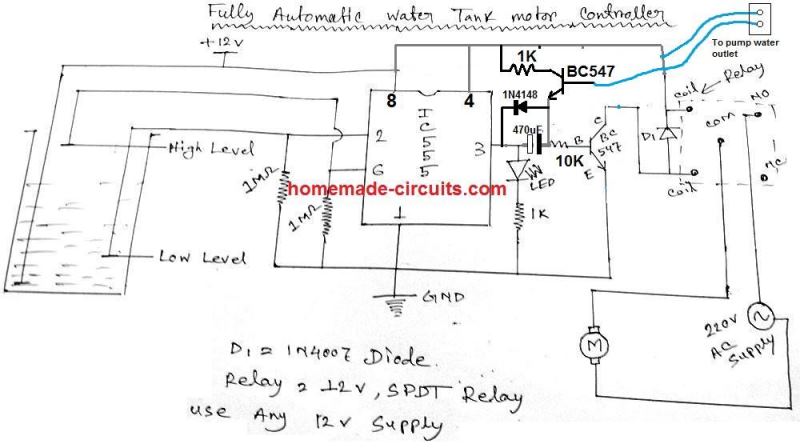An preexisting circuit for an IC 555-based water level controller may be modified to include the dry run protection, as seen below:

In the schematic above, the dry run function operates as follows:
The IC's pin #2 loses its positive voltage whenever the water level falls beneath the "low level" probe. As a result, pin #2 becomes low, which immediately raises pi #3.
The pump motor is turned on when this strong signal crosses the 470uF capacitor, which turns on the relay driver stage.
Only until the 470 uF charges—which could take three to five seconds—do the relay driver and pump stay turned on.
Should the pumps begin to pull water during this period, the pumped water might be able to cross the water sensor that is attached to the blue wires.
Bypassing the 470 uF capacitor, this corresponding BC547 will have obtained the base bias and start conducting. Up until the full tank level is attained, this threshold will allow the relay driver BC547 to operate freely.
However, in the case that there is no water and the pump goes dry, the top BC547 cannot be biased, and finally the 470 uF will be fully charged, preventing any more base current from reaching the relay driver stage. As a result, the relay will be turned off, avoiding the dry run situation.
Leave a Reply